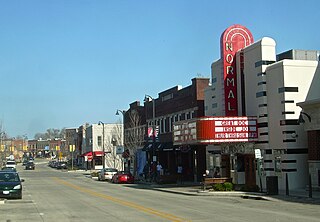
Normal is a town in McLean County, Illinois, United States. As of the 2020 census, the town's population was 52,736. Normal is the smaller of two principal cities of the Bloomington–Normal metropolitan area, and is Illinois' seventh most populous community outside the Chicago metropolitan area. The main campus of Illinois' oldest public university, Illinois State University, a fully accredited four-year institution, is in Normal, as is Heartland Community College, a fully accredited two-year institution. Chris Koos has been Normal's mayor since 2003.
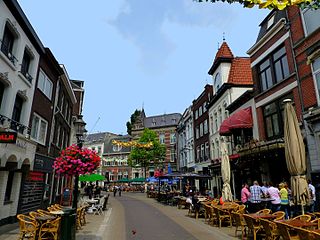
Venlo ( ) is a city and municipality in the southeastern Netherlands, close to the border with Germany. It is situated in the province of Limburg. The municipality of Venlo counted 101,578 inhabitants as of January 2019.
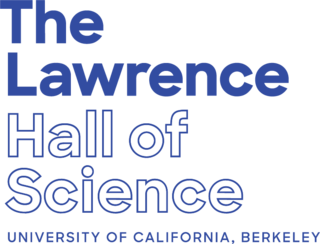
The Lawrence Hall of Science is a public science center in Berkeley, California that offers hands-on science exhibits, designs curriculum, aids professional development, and offers after school science resources to students of all ages. The Lawrence was established in 1968 in honor of physicist Ernest Orlando Lawrence (1901–1958), the University of California's first Nobel laureate. The center is located in the hills above the University of California, Berkeley campus, less than a mile uphill from the University's Botanical Garden.

Fernbank Museum of Natural History, in Atlanta, Georgia, is a museum that presents exhibitions and programming about natural history. Fernbank Museum has a number of permanent exhibitions and regularly hosts temporary exhibitions in its expansive facility, designed by Graham Gund Architects. Giants of the Mesozoic, on display in the atrium of Fernbank Museum, features a 123-foot (37 m) long Argentinosaurus, the largest dinosaur ever classified; as well as a Giganotosaurus. The permanent exhibition, A Walk Through Time in Georgia, tells the twofold story of Georgia's natural history and the development of the planet. Fernbank Museum has won several national and international awards for one of its newest permanent exhibitions, Fernbank NatureQuest, an immersive, interactive exhibition for children that was designed and produced by Thinkwell Group. The awards NatureQuest has won include the 2012 Thea Award for Outstanding Achievement for a Museum Exhibit and the 2011 Bronze Award for Best Museum Environment from Event Design. The nearby Fernbank Science Center is a separate organization operated by the DeKalb County Board of Education and is not affiliated with Fernbank Museum of Natural History.

The Great Lakes Science Center is a museum and educational facility in downtown Cleveland, Ohio, United States. Many of the exhibits document the features of the natural environment in the Great Lakes region of the United States. The facility includes signature (permanent) and traveling exhibits, meeting space, a cafe, and an IMAX Dome theater.

The Houston Museum of Natural Science is a natural history museum located on the northern border of Hermann Park in Houston, Texas, United States. The museum was established in 1909 by the Houston Museum and Scientific Society, an organization whose goals were to provide a free institution for the people of Houston focusing on education and science. The museum complex consists of a central facility with four floors of natural science halls and exhibits, the Burke Baker Planetarium, the Cockrell Butterfly Center, and the Wortham Giant Screen Theatre. In 2022, the museum received 1,520,000 visitors, making it seventh on the List of most-visited museums in the United States, and was the third most-visited U.S. science museum. Much of the museum's popularity is attributed to its large number of special or guest exhibits.

The Anchorage Museum is a large art, history, ethnography, ecology and science museum located in a modern building in the heart of Anchorage, Alaska. It is dedicated to studying and exploring the land, peoples, art and history of Alaska.
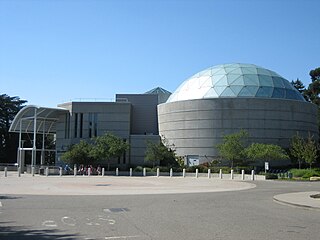
Chabot Space and Science Center, located in Oakland, California, is a center for learning in Earth and space science, which features interactive exhibits, planetariums, a large screen theater, hands-on activities, and three powerful telescopes.

Explora is a science center in Albuquerque, New Mexico, United States, located near Old Town Albuquerque. Its name is the imperative form of the Spanish language verb explorar, which means to explore.

Children's Discovery Museum of San Jose(CDM) is a cultural institution serving children, families, and schools in the Silicon Valley/San Francisco Bay Area. A member of the Association of Children's Museums and the Association of Science-Technology Centers, Children's Discovery Museum is located in downtown San Jose, California on Woz Way. The street is named after Steve Wozniak, co-founder of Apple Computer whose nickname is "Woz." Wozniak was the single largest private donor during the original capital campaign that funded the museum.
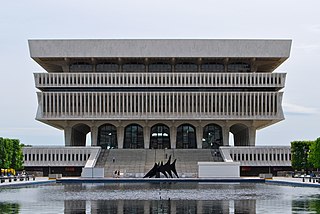
The New York State Museum is a research-backed institution in Albany, New York, United States. It is located on Madison Avenue, attached to the south side of the Empire State Plaza, facing onto the plaza and towards the New York State Capitol. The museum houses art, artifacts, and ecofacts that reflect New York’s cultural, natural, and geological development. Operated by the New York State Education Department's Office of Cultural Education, it is the oldest and largest state museum in the US. Formerly located in the State Education Building, the museum now occupies the first four floors of the Cultural Education Center, a ten-story, 1,500,000-square-foot (140,000 m2) building that also houses the New York State Archives and New York State Library.

The Israel National Museum of Science, Technology, and Space is a science and technology museum in the city of Haifa, Israel. The museum has approximately 200,000 visitors annually.

Discovery Station, is a hands-on, family-friendly museum in downtown Hagerstown, Maryland, United States that opened to the public in 2005. The museum's focus is to create an environment that stimulates curiosity for discovery, exploration, and further investigation through exhibits and programs that focus on Science, Technology, Engineering, Art, and Math (STEAM) principles. The museum is a member of the Association of Science and Technology Centers (ASTC), the American Alliance of Museums (AAM), and the NASA Museum Alliance.

The Exploratorium is a museum of science, technology, and arts in San Francisco, California. Founded by physicist and educator Frank Oppenheimer in 1969, the museum was originally located in the Palace of Fine Arts and was relocated in 2013 to Piers 15 and 17 on San Francisco's waterfront.
The Working Waterfront Maritime Museum is a Maritime Museum located in Tacoma, Washington, USA. The museum sits on the Thea Foss Waterway. Along with the Discovery Wharf Children's Activity Area, the WWMM is a part of the Foss Waterway Seaport, a 501c3 non-profit organization founded in 1996. In conjunction with the Foss Waterway Development Agency, the Seaport seeks private and public funds to support its mission statement. The Working Waterfront Maritime Museum is dedicated to creating "a permanent education and activity venue on the Tacoma waterfront".
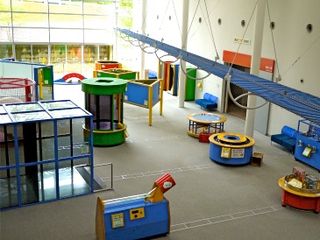
The Izumo Science Center is a science center located in Izumo-shi, Shimane Prefecture, Japan that operates both as a school and as a center for public education. The pupils in Izumo-shi, from third grade through junior high school, take lessons in natural science. On weekends, the center hosts events about science and manufacturing for the general public. About 150,000 people, as many as the population of Izumo-shi, visit there every year.
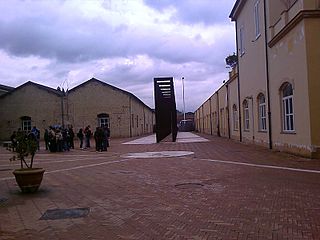
The Città della Scienza is a museum in Naples, in Campania in southern Italy. It was opened to the public in 1996 and features various areas where visitors can explore and learn about science, natural phenomena, and hosts a wide large number of science exhibits and culture events. The museum also promotes sustainable technologies activities and enterprises.
Physics outreach encompasses facets of science outreach and physics education, and a variety of activities by schools, research institutes, universities, clubs and institutions such as science museums aimed at broadening the audience for and awareness and understanding of physics. While the general public may sometimes be the focus of such activities, physics outreach often centers on developing and providing resources and making presentations to students, educators in other disciplines, and in some cases researchers within different areas of physics.
Science tourism is a travel topic grouping scientific attractions. It covers interests in visiting and exploring scientific landmarks, including museums, laboratories, observatories and universities. It also includes visits to see events of scientific interest, such as solar eclipses.
















